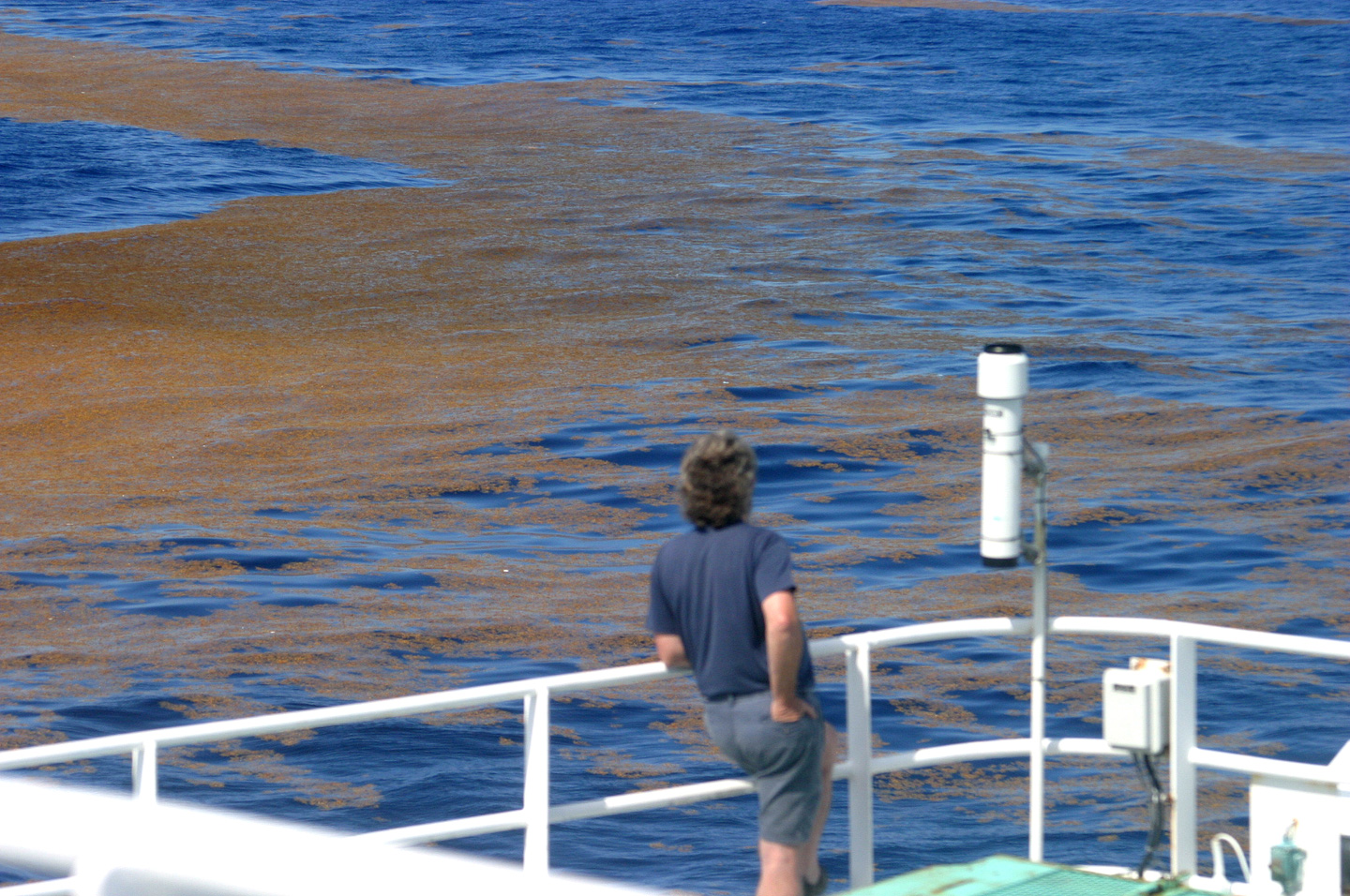A massive floating jungle of sargassum seaweed—so large it can be seen from space—is on a collision course with the North America mainland. It’s most likely hitting land somewhere on the Gulf of Mexico shoreline, according to scientists monitoring the phenomenon.
“It’s incredible,” professor Brian LaPointe from Florida Atlantic University told NBC News. “What we’re seeing in the satellite imagery does not bode well for a clean beach year.”
Floating sargassum weeds harbor an abundance of small fish. Big mats of floating weeds occur every year along the Atlantic and Gulf coasts of the U.S. They are choice fishing areas for anglers targeting a variety of gamefish, including marlin, sailfish, tuna, dolphin, and many others. Prized gamefish feed on the smaller fish that live in and under the weed mats.
increases in two consecutive months, the overall Sargassum quantity in the central Atlantic Ocean
decreased from January to February, although this abundance (6.1 million tons) is still the second
highest amount recorded for the month of February. NASA, University of South Florida Optical Oceanography Lab
Because of its ecological importance, sargassum off the southern Atlantic states was designated as “Essential Fish Habitat” in 2003, according to NOAA, which affords these areas special federal protection. An overabundance of sargassum when it reaches shore, however, can be disastrous.
Sargassum Seaweed Mats Are Growing in Size
LaPointe is an authority on sargassum, and while large mats commonly wash ashore in south Florida, he says Key West beaches already are inundated with seaweed. The east coast of Mexico is preparing for a huge influx of weeds, which can stack up to three feet high, onto its famed Gulf Coast beaches.
While sargassum weeds on shore are more of a nuisance than a problem, in huge quantities sargassum can be trouble, says professor Brian Barnes from the University of South Florida College of Marine Science. Seaweed by the tons can cover beaches throughout South Florida, the Caribbean, and Mexico. It also covers reefs where it can choke coral, and it diminishes water and air quality as it rots on shore.

Last year, huge piles of sargassum on St. Croix in the U.S. Virgin Islands caused water shortages and a state of emergency. In 2018, the islands of Guadeloupe and Martinique had thousands of people with respiratory problems heading to medical clinics from fouled air resulting from rotting sargassum.
The 5,000-mile wide weed pile heading to mainland North America is one of the largest recorded, and sargassum mats seems to be an increasing problem along the Atlantic Coast.
“Historically, as far back as we have records, sargassum has been a part of the ecosystem, but the scale now is just so much bigger,” Barnes said. “What we would have thought was a major bloom five years ago is no longer even a blip.
“Before 2011, it [sargassum] was there but we couldn’t observe it with satellites because it wasn’t dense enough. Since then, it has just exploded and we now see these huge aggregations.”
